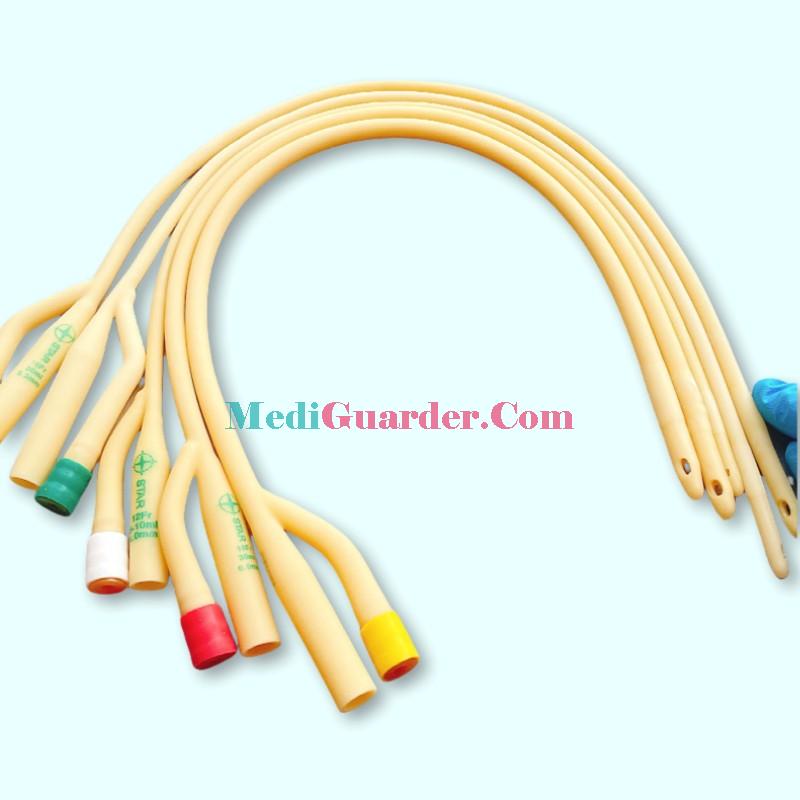In the modern medical system, medical disposable latex catheters, as commonly used disposable medical consumables, are widely applied in scenarios such as dysuria, surgical anesthesia, and monitoring of critically ill patients. They not only provide essential medical support for patients but also play a crucial role in reducing the risk of urinary tract infections and improving the quality of medical care. This article will explore medical disposable latex catheters in depth from multiple dimensions, including product introduction, usage methods, precautions, and the disposal of medical waste.
Product Introduction
Medical disposable latex catheters are typically made of natural latex, featuring excellent flexibility, elasticity, and biocompatibility. The latex material ensures that the catheter can pass smoothly through the urethra during insertion, minimizing irritation to the urethral mucosa and reducing the incidence of allergic reactions. The design of catheters takes into account the physiological characteristics of different patients, offering a variety of specifications for clinical selection. Commonly available catheter diameters range from 6Fr to 30Fr. Here, Fr is a unit representing the outer diameter of the catheter, with 1Fr approximately equal to 0.33mm. Smaller – diameter catheters are suitable for children or patients with narrower urethras, while larger – diameter catheters are appropriate for patients with higher urine drainage requirements.
In addition, disposable catheterization kits usually contain components such as catheters, lubricants, syringes, and drainage bags, providing a one – stop catheterization solution for medical staff. This integrated design not only improves operational efficiency but also reduces operational errors caused by insufficient preparation.

Usage Methods
Preparation Phase
Before performing catheterization, medical staff should first assess the patient’s condition, consciousness, and urethral condition, and select the appropriate catheter and catheterization kit. Meanwhile, explain the purpose and process of the operation to the patient to obtain their cooperation. The operation area should be strictly disinfected to ensure a sterile environment. Medical staff need to wear sterile gloves, masks, and hats and follow the principles of aseptic operation.
Insertion Phase
Lubricate the front end of the catheter to reduce resistance during insertion. For male patients, lift the penis at a 60 – degree angle to the abdominal wall to eliminate the pubic curvature of the urethra, facilitating catheter insertion. Female patients need to separate the labia, locate the urethral orifice, and then insert the catheter slowly. The general insertion depth is 20 – 22cm for male patients and 4 – 6cm for female patients. After urine flows out, insert the catheter an additional 1 – 2cm.
Fixation and Connection
After inserting the catheter, inject an appropriate amount of normal saline into the balloon using a syringe to fix the position of the catheter. Then connect the catheter to the drainage bag to ensure smooth urine drainage. The drainage bag should be placed below the level of the bladder to prevent urine backflow.
Precautions
Aseptic Operation
During the catheterization process, it is essential to strictly follow the principles of aseptic operation to prevent bacterial infections. Medical staff should avoid touching the sterile part of the catheter to reduce the chance of contamination. Additionally, regularly replace the catheterization kit and drainage bag to lower the risk of infection.
Avoid Injury
When inserting the catheter, act gently to avoid excessive force that could damage the urethral mucosa. For patients with urethral strictures or prostatic hyperplasia, pay special attention to operation skills. If necessary, insert the catheter under the guidance of a urethral sound.
Regular Replacement
The general service life of disposable latex catheters is 7 – 14 days. They should be replaced in a timely manner if the period is exceeded. Long – term indwelling of catheters may lead to damage to the urethral mucosa, infections, and the formation of stones. Therefore, it is necessary to regularly evaluate the patient’s urination function and remove the catheter as early as possible.
Disposal of Medical Waste
Medical disposable latex catheters are classified as infectious medical waste and must be properly disposed of in accordance with relevant regulations. Used catheters should be placed in yellow medical waste bags, sealed, and then handed over to professional medical waste disposal agencies for incineration. Mixing medical waste with domestic waste or discarding it casually is strictly prohibited to prevent the spread of diseases and environmental pollution.
In addition, disposable medical items such as syringes and gloves in the catheterization kit should also be disposed of according to the corresponding classification standards. Syringes belong to sharp medical waste and should be placed in sharp boxes; gloves and other disposable consumables should be placed in yellow medical waste bags.
Conclusion
Medical disposable latex catheters, as an important part of disposable medical consumables, play an irreplaceable role in modern medicine. Correct usage methods and strict management measures can not only improve the success rate of catheterization but also reduce the risk of infections for patients. At the same time, proper disposal of medical waste is also an important aspect of ensuring the safety of the medical environment. By gaining a deep understanding of medical disposable latex catheters, medical staff can better provide high – quality medical services to patients and promote the improvement of medical quality.
 China Disposable Medical Supplies, Medical Consumables Supplier
China Disposable Medical Supplies, Medical Consumables Supplier
